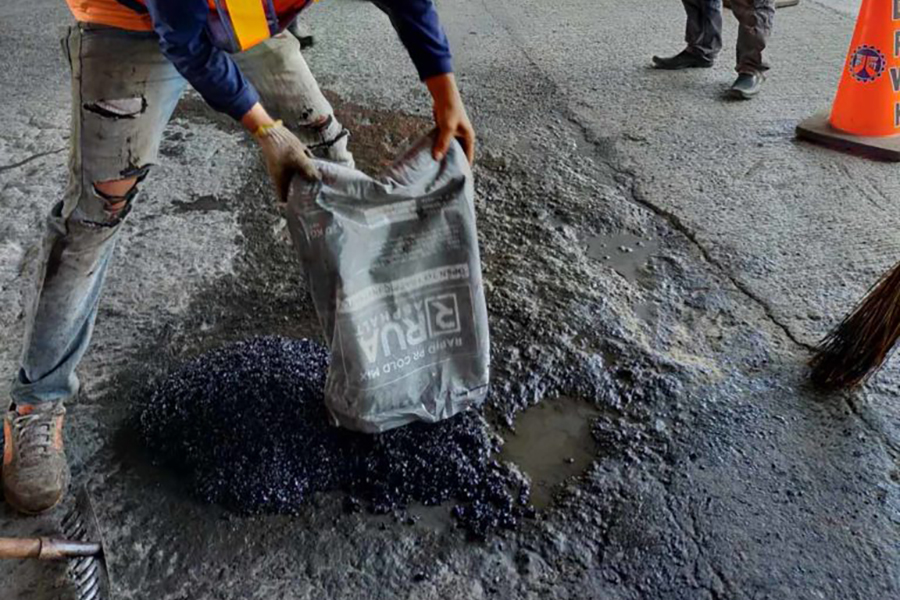Reimagine Your Area: Hot Mix Asphalt Paving for Angled Parking Lot Tasks
Unlocking the Secrets of Hot Mix Asphalt Innovation
Discovering the depths of hot mix asphalt innovation discovers a globe where careful processes and exact formulations assemble to shape our roads and framework. The combination of fillers, binders, and aggregates isn't merely a construction job but a critical orchestration of resilience and efficiency.
Importance of Warm Mix Asphalt
Hot Mix Asphalt plays an essential function in modern-day facilities development because of its durability and cost-effectiveness. As one of the most commonly used leading product for roads, freeways, and parking area, Warm Mix Asphalt offers a variety of benefits that contribute to its value in building jobs. One vital benefit is its ability to endure hefty web traffic loads and rough weather, offering a reputable and resilient surface area for transport networks. Furthermore, Warm Mix Asphalt is cost-effective in both preliminary construction and lasting upkeep, making it a preferred choice for numerous framework projects.
The longevity of Hot Mix Asphalt comes from its make-up, that includes accumulations, binder, and filler materials that are meticulously chosen and blended to satisfy particular efficiency demands. This precise mix results in a adaptable and solid pavement that can sustain constant usage without substantial deterioration. In Addition, Hot Mix Asphalt is 100% recyclable, further improving its sustainability and ecological benefits. Generally, the significance of Warm Mix Asphalt in facilities advancement can not be understated, as it continues to be a keystone of contemporary building and construction methods.
Components of Asphalt Mixes
The structure of asphalt blends is composed of very carefully chosen aggregates, binder, and filler materials that are critical for accomplishing specific efficiency needs. Aggregates are the primary element of asphalt mixes, providing toughness and security. The binder, commonly bitumen or asphalt concrete, holds the aggregates together and supplies versatility and resilience to the mix.
The mix and proportion of these elements play a considerable function in figuring out the quality and efficiency of the asphalt mix. Designers meticulously develop the mix to satisfy particular needs, thinking about variables like web traffic volume, climate conditions, and sidewalk life-span. Proper selection and harmonizing of aggregates, binder, and fillers are vital for producing resilient, durable asphalt pavements.
Combining and Manufacturing Methods

As soon as the accumulations are selected, the binder, usually asphalt concrete, is contributed to bind the materials with each other. The binder's high quality and quantity substantially affect the mix's resistance, stamina, and flexibility to ecological variables. Additionally, fillers like moisturized lime or Rose city cement may be included to improve particular qualities of the asphalt mix, such as its workability or wetness resistance.
During manufacturing, the accumulations and binder are heated up, usually in between 250-325 ° F(121-163 ° C ), to assist in mixing and ensure appropriate coating of the accumulations. The blending process needs to be comprehensive to attain an uniform blend that advertises the desired efficiency features of the asphalt. Different methods, such as set blending or drum blending, are employed to achieve consistent and high-grade asphalt mixes for building and construction projects.
Factors Affecting Asphalt Efficiency
Factors influencing asphalt performance encompass a variety of variables that impact the longevity, longevity, and overall quality of asphalt pavements. One essential more helpful hints variable is the top quality of materials made use of in the asphalt mix. The kind and resource of accumulations, the binder quality, and the ingredients all play a considerable duty in establishing the efficiency of the asphalt sidewalk. The gradation of accumulations is crucial as it influences the mix's stability, workability, and resistance to cracking and rutting.

Layout factors to consider, such as sidewalk density and drain, are essential in making certain the lasting performance of the asphalt pavement. By carefully taking into consideration these specialists, designers and elements can optimize asphalt performance and enhance the solution life of sidewalks.
Sustainable Practices in Asphalt Technology

Furthermore, the growth of warm-mix asphalt (WMA) modern technologies has obtained traction recently. WMA allows for the manufacturing and positioning of asphalt blends at lower temperature levels compared to traditional hot-mix asphalt, causing lowered power intake and greenhouse gas exhausts. Moreover, the usage of porous asphalt blends can aid alleviate stormwater overflow problems by permitting water to infiltrate via the sidewalk and right into the ground, promoting natural water purification and charge procedures. By applying these lasting practices, the asphalt industry can add to building a more resistant and eco friendly infrastructure network.
Verdict
In final thought, warm mix asphalt technology plays a critical duty in modern framework advancement due to its longevity and cost-effectiveness. By great post to read carefully balancing components, using correct blending strategies, and thinking about numerous factors, designers can develop top notch asphalt blends that hold up against hefty website traffic lots and severe weather problems. Accepting lasting techniques, such as utilizing warm-mix innovations and recycled materials, further enhances the ecological friendliness of asphalt technology.
Mixing and production strategies in warm mix asphalt innovation entail the exact mix and read this post here handling of aggregates, binder, and fillers to produce a resilient and high-performance asphalt mix.Variables affecting asphalt efficiency include an array of variables that affect the durability, longevity, and general quality of asphalt pavements. Lasting techniques in asphalt modern technology encompass numerous campaigns intended at minimizing the ecological influence of asphalt production and paving procedures. By incorporating reclaimed asphalt sidewalk (RAP) and recycled asphalt roof shingles (RAS) into new asphalt mixes, the industry can significantly reduce the usage of raw materials and energy, while likewise decreasing land fill waste.
WMA enables for the manufacturing and positioning of asphalt mixes at lower temperature levels contrasted to typical hot-mix asphalt, resulting in decreased energy intake and greenhouse gas emissions.